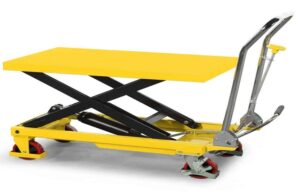How to live better with acute or chronic pain?
Acute and chronic pain, as well as mental suffering, influence our well-being, our quality of life and sometimes even our existence. What are the ways to relieve this pain? The expert and medical director of the Pain Therapy Department of the Center Hospitalier du Haut-Valais (SZO), Dr. Birgit Sojer, is dedicated to this specialized field and the people affected.
In 2005, the European Pain Study showed that 19% of adults suffer from chronic pain. In Switzerland, this figure was 16%, or one in six Swiss people suffer from a chronic pain problem .
Acute or chronic pain?
Due to the pain of a fracture, for example, we keep the injured part of the body still, which promotes healing; the pain goes away over time. In chronic pain, this signaling, protective and healing function is lost. This frequent and persistent pain generally lasts more than 3 months.”
Physical and psychological causes
“All chronic pain begins as acute. Take the example of back pain: in our modern society, we move far too little . Outside of sleeping periods, we spend 90% of our day sitting. Due to a lack of blood circulation, the back and abdominal muscles atrophy and can no longer provide sufficient support to the bones and joints.”
The vicious circle begins with lumbago. “If we don’t treat lumbago adequately by relaxing the muscles under tension, they shorten and harden. Result: the muscle is even more poorly irrigated and suffers from excess acidity which we perceive as muscle pain. It is especially at this moment that you should not make the mistake of avoiding efforts because of the pain. On the contrary, we must get back in motion as quickly as possible ,” advises the specialist.
“Beyond physical conditions, psychological damage, such as long-term stress, can also lead to chronic pain in different areas of the body. The face, head, back or abdomen can thus be affected. The pain can also spread throughout the body, for example in cases of fibromyalgia.”
Constant pain wears a person down
Your attention shifts from the surroundings to your own body. Chronic pain conditions are difficult to understand for others , who struggle to understand them in the long term. The partner and family are the first to suffer from the depressed mood of the affected person’s irritability or lack of interest; then it is the turn of his social environment or his relationships at work. Patients suffering from chronic pain withdraw from social life , no longer enjoy their hobbies, in the worst cases lose their job or take their own lives out of despair. »
Subjective sensations and perceptions
“Chronic pain is often diffuse, wandering through the body in a negative, persistent and exhausting way. The sensation of pain is always subjective. It is a perception such as taste, hearing or smell, but negatively charged like anger, embarrassment or sadness.
Because pain is subjective , a scale allows it to be classified. Pain specialists also work with questionnaires to record the biopsychosocial components of pain and to be able to more precisely assess the extent of suffering and the stage of chronic impairment . Further clarification, such as blood samples are only necessary if we want to rule out other causes, including chronic inflammation or vitamin deficiency.”
For the prevention of chronic pain, the “recipe” is the same as for hypertension, diabetes or cardiovascular diseases: “ A healthy diet, plenty of exercise, a varied life with a good work-life balance private. If you have a loving partnership, interesting work, a good social environment and rewarding hobbies, you shouldn’t be affected too much by chronic pain problems.
Effectively treating chronic pain
“Patients are often sent from one specialist to another,” regrets Birgit Sojer.
For two years, the Brig pain clinic has offered a pain treatment program in a hospital setting , in addition to outpatient consultations. “An interdisciplinary, multimodal pain treatment team of therapists, psychologists and physiotherapists examines patients from head to toe . If necessary, colleagues from other disciplines such as orthopedic surgeons, internists and neurologists specializing in rehabilitation accompany us to clarify certain points.”
With success. “In 80% of cases, the objective of improving quality of life, maintaining work capacity or even returning to work was achieved. Patients suffering from pain must be prepared to actively invest in their health ,” emphasizes Dr. Sojer. “In just three and a half weeks, with psychological discussions, lots of pain information, help from intensive physiotherapy, occupational therapy, art therapy, movement therapy and specially trained nurses, patients learn to improve their quality of life despite the pain .”














Post Comment
You must be logged in to post a comment.